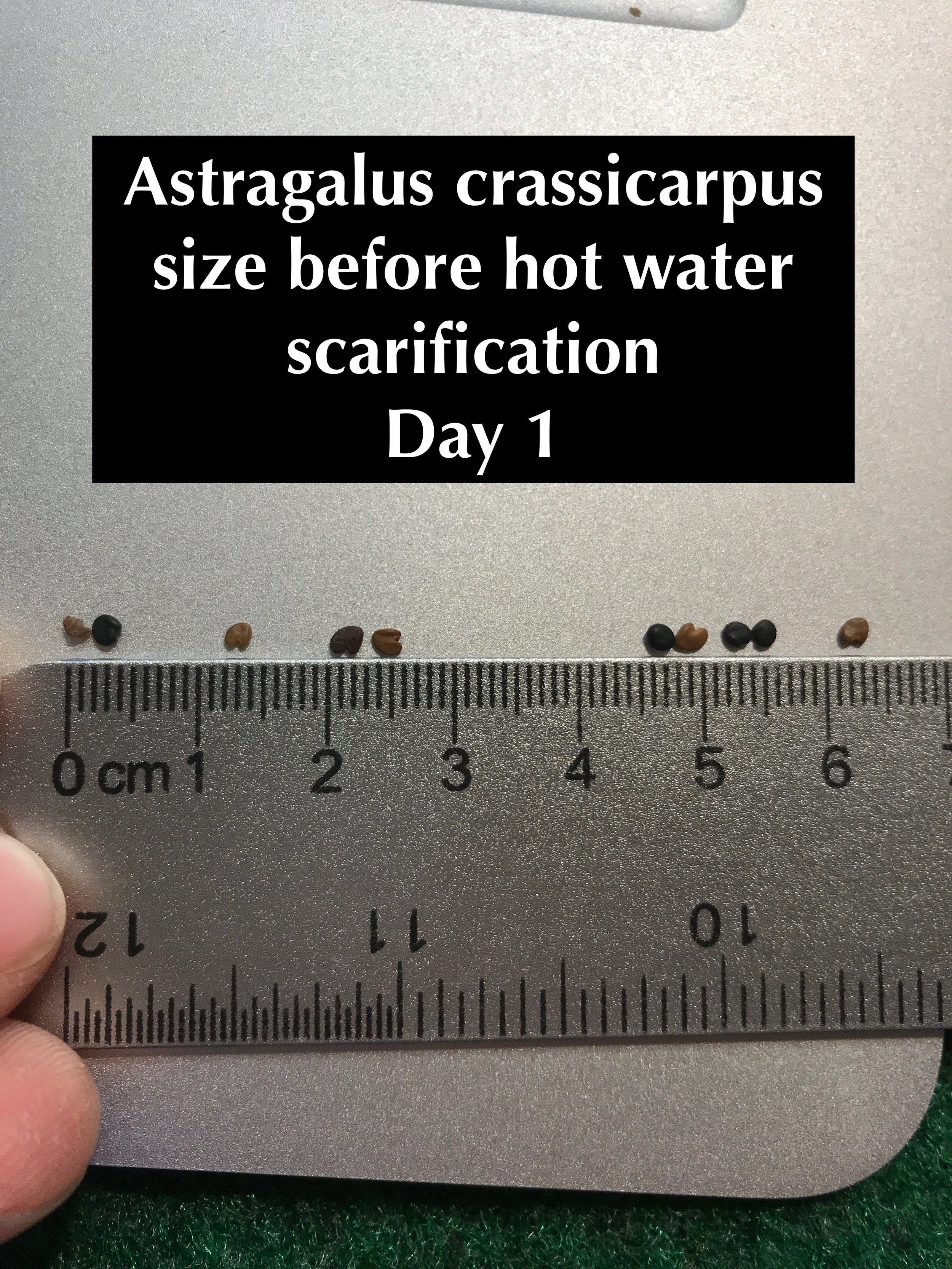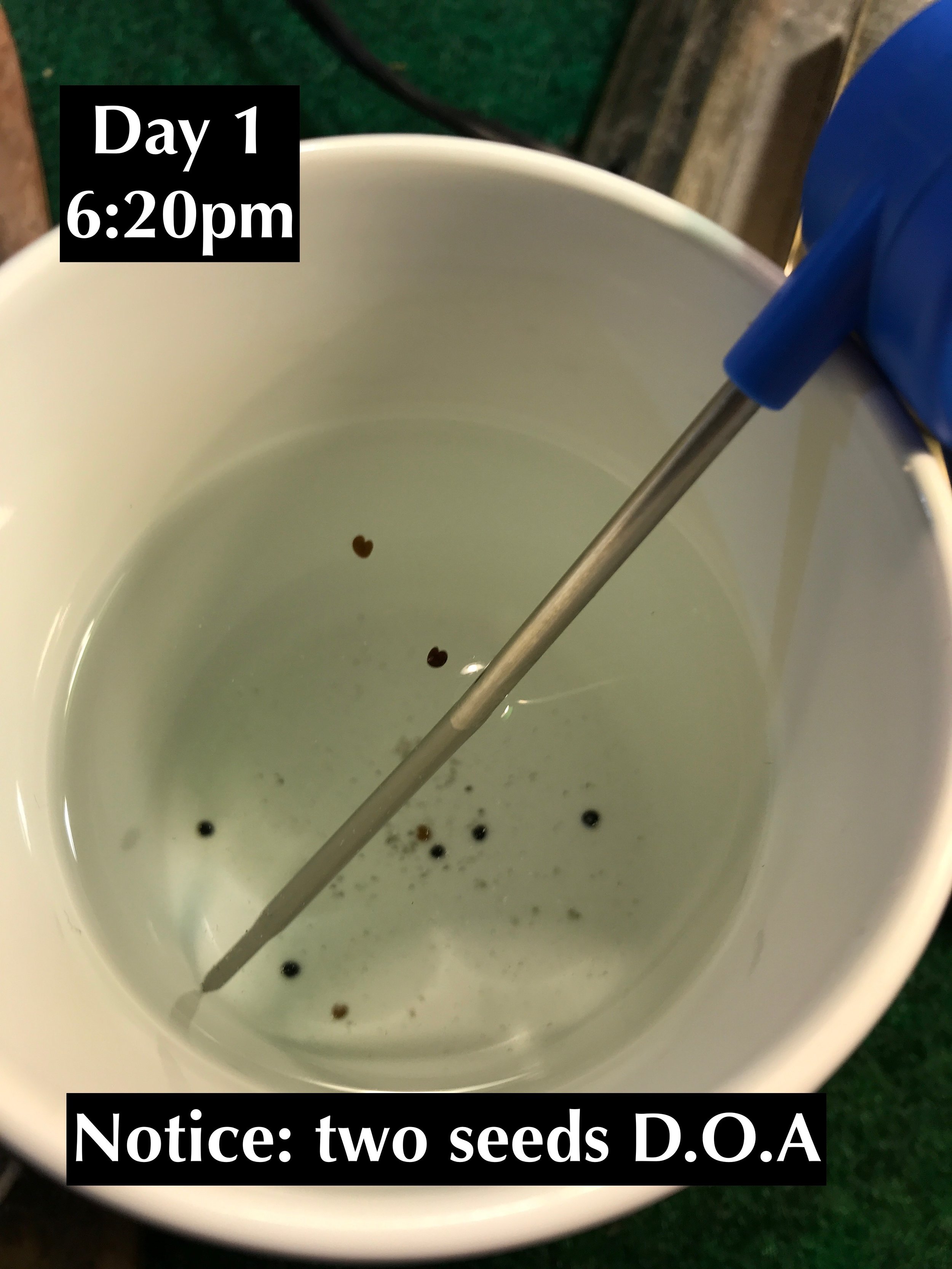Ground Plum: A Perennial Pea Plant With Pods that Pass for Plums
Astragalus crassicarpus
[5]
In the young days of invasion, when the "New" World laid bloom in its old form, when the buffalo gobbled as a fierce woolen mat of thunder across the plains, the the prairies were said to have been tinged with purple when Astragalus crassicarpus were in flower [7].
Still, portly prairie dogs tuck the pods of A. crassicarpus into their storage cellars for winter forage [7] after the Ground Plums stop waving their purple flags to greet the Spring.
Welcome to the little-discussed world of the Astragalus crassicarpus.
Warning: this is not an instruction on how to find and eat wild foods; it is a natural history profile. Some plants in the Astragalus genus will kill you if you mistake them for an edible plant like this one. So, you know, don't go and kill yourself.
Description
This perennial plant is prostrate with 10-30 cm stems with are slightly hairy and clustered. The leaves are pinnately compound and contain round 20 small leaves. The flowers form as a raceme containing purple banner/wing/keel pea flowers. The fruits are succulent plum-shaped peas [16]. The seeds are approximately 2mm across, smooth, and shaped like oven-mits (SEE: Pictorial Journeys).
[12]
Habitat
[3]
A. crassicarpus has been seen in Pinon Pine and Juniper transitional/riparian areas [8], on sandy hillsides [13] flowering in mid-to-late April [9] and fruiting mid to late May [8].
An interactive map showing locations of Astragalus crassicarpus specimens collected in the past can be found by pressing one of the buttons below. Warning: press the wrong button, and you will be Rick rolled. The choice is yours; choose carefully.
Culinary Uses
The unripe pods are eaten raw [4] or cooked, and are said to taste like a cross between green peas and asparagus [11]. I've not found this plant yet.
Ethnopharmacology
The roots were prepared as an infusion and used as a fever reducer [4]. The PAWNEE used the crushed seeds mixed with buffalo fat to treat colic [15]. The CHIPPEWA used an decoction of the roots as a stimulant, to treat convulsions, and for bleeding wounds [17]. The MONTANA, DAKOTA, and LAKOTA are on the record for eating the fruits raw or cooked [17].
[6]
History
In the 19th century, there was some talk of cultivating A. crassicarpus as an early Spring vegetable [14].
Pictorial Journey
Some plant seeds remain dormant until proper conditions arise. A. crassicarpus seeds are reportedly dormant due to a hard seed coat, and it is recommended to use hot-water to scarify the seeds to break their dormancy. The below pictorial journey is a hot-water scarification attempt on A. crassicarpus seeds I had received in the mail from Seedville USA. I will be updating this section until the seeds germinate (hopefully).



References
[1] Elpel, T. J. (2013). Botany in a day: the patterns method of plant identification: an herbal field guide to plant families of North America. Pony, Mont: Hops Press.
[2] Elpel, T. J. (2013). Botany in a day: the patterns method of plant identification: an herbal field guide to plant families of North America. Pony, Mont: Hops Press.
[3] Image retrieved from the USDA website here: https://plants.usda.gov/core/profile?symbol=ascr2
[4] Nebraska State Historical Society., . (1906). Nebraska State Historical Society publications. [Lincoln] Neb.: The Society.
[5] This image was retrieved under Creative Commons licensure from the following link: here.
[6] This image was retrieved under Creative Commons licensure from the following link: here.
[7] United States. Science and Education Administration., .(1941), United States. Department of Agriculture., . Miscellaneous publication.[Washington, D.C.]: U.S. Dept. of Agriculture
[8] Information retrieved from here: http://swbiodiversity.org/seinet/collections/individual/index.php?occid=1747831&clid=0
[9] Harvey, L. Roy Harris. (1908). Floral succession in the prairie-grass formation of southeastern South Dakota... Chicago.
[10] Bentley, H. L. (1898). A report upon the grasses and forage plants of central Texas: By H.L. Bentley ... Washington: Govt. print. off..
[11] Moyer, L. R. 1848-1917. (1910). The prairie flora of southwestern Minnesota. [Minnesota?: s.n..
[12] Hermann, F. J. 1906-. (1966). Notes on Western range forbs: Cruciferae through Compositae. Washington, D.C.: Forest Service, U.S. Dept. of Agriculture .
[13] North Dakota. Agricultural College Survey., . (1909). Biennial report of the director of the Agricultural College Survey of North Dakota to the Governor of North Dakota. Bismarck, N.D.: The Survey.
[14] United States. Office of Experiment Stations., . (1889). Experiment station record. Washington: G.P.O..
[15]Smithsonian Institution. Bureau of American Ethnology., . Annual report of the Bureau of American Ethnology. Washington, D.C.: U.S. Govt. Print. Off.
[16] (n.d.). Retrieved March 08, 2018, from http://spuds.agron.ksu.edu/asca.htm
[17] Moerman, D. E. (2010). Native American ethnobotany. Portland, Or.: Timber Press.


![[5]](https://images.squarespace-cdn.com/content/v1/59bae60f1f318d07a99856a4/1520377495504-A7LSHCZE9C4GF2FOECLO/Ground+Plum.jpg)
![[12]](https://images.squarespace-cdn.com/content/v1/59bae60f1f318d07a99856a4/1520395118541-P28LYEBI64O1S2OKNBFV/Screen+Shot+2018-03-06+at+8.57.54+PM.png)

![[3]](https://images.squarespace-cdn.com/content/v1/59bae60f1f318d07a99856a4/1520372417672-QAROUXJAM9DVOEKWQZ3H/Screen+Shot+2018-03-06+at+2.39.58+PM.png)
![[6]](https://images.squarespace-cdn.com/content/v1/59bae60f1f318d07a99856a4/1520377635062-DXWAKKU9QEFJSIB0R8U4/Ground+Plum2.jpg)

